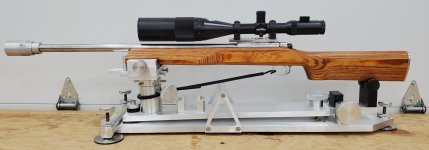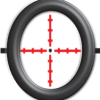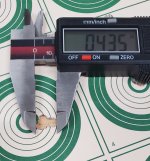Honestly it's not a simple question to answer. Kind of yes and no. A sled WILL take the human element out of the equation. But the recoil could cause accuracy issues in a sled vs a person with good recoil management. If you .223 is in a good heavy chassis and you have a solid bipod and a good rear bad set up a sled likely won't improve anything. If you are laying your rifle on a pack for example and are not very steady then a sled can help.
I have a sled and have had good luck playing with it. But I do see more repeatable good results with a solid rear bag set up and good fundamentals.
Appreciate your take, I am just trying to make sure it is not me causing the problem. The more I can remove "me" from the process, the better answer I should get. I am using a MDT ACC Premier chassis, it is heavy and stable. If the sled produces tigher groups without flyers, I know I have to work on my skills.
I have a sled and have used it quite a bit for various things. I will still use it, I am sure.
What I find even more stable than my sled are heavy sand bags. The range I use to frequent near Lapwai uses old shot bags filled with sand. To prevent sand from leaking, most of the bags have been sprayed with some sort of rubberized compound, like the stuff Billy Mayes advertises, Flex Seal.
Stack up several for the fore end. I would place each layer perpendicular to the next. Each layer is 2 bags laying side by side. The next to last layer is parallel to the rifle, the last layer, a single bag would get karate chopped to create a channel for the rifle fore stock.
Similar for the rear bags but usually just one or maybe 2 layers. This foundation is truly key and you don't want it to be able to shift around at all.
I then use the buttstock angle to get on target, pushing the rifle forward to go lower or back towards me to get higher. You are using that front set as a fulcrum.
Then apply some shoulder to absorb recoil, rest my cheek, focus on the target, get ready for a shot with the bolt open, not a round in the chamber. Close my eyes, inhale and exhale several times and open my eyes. Nothing should have changed. If it did, I re-positioned, usually myself but sometimes the rifle and bags, until nothing changed when I went through that exercise.
I know it's all good when I pull the trigger, recoil happens and I am still either right on the point of original aim or very close to it. If not, I am not positioned behind the rifle correctly.
What I try to eliminate doing this is me muscling the rifle into position. I have also eliminated any sort of "hop" that can happen with a bipod. I am not knocking bipods and use them when possible...usually on a bench because otherwise, grass or weeds or shit is in the view from a bipod while hunting. I prefer using a backpack that sits much higher than any of my bipods or a tripod if I don't mind carrying one.
This is the same process for any rifle shooting (as far as I know), albeit, in a live situation like when hunting, you do not have time to build and rebuild that shooting position. That's why it's important to build that skill, that feeling that everything is right, when the shot doesn't really matter other than ego, so you instinctively know when shit is right or not.
A .223 should not have much recoil to manage AT ALL so taking you out of the equation is less difficult than say a 300WM.






